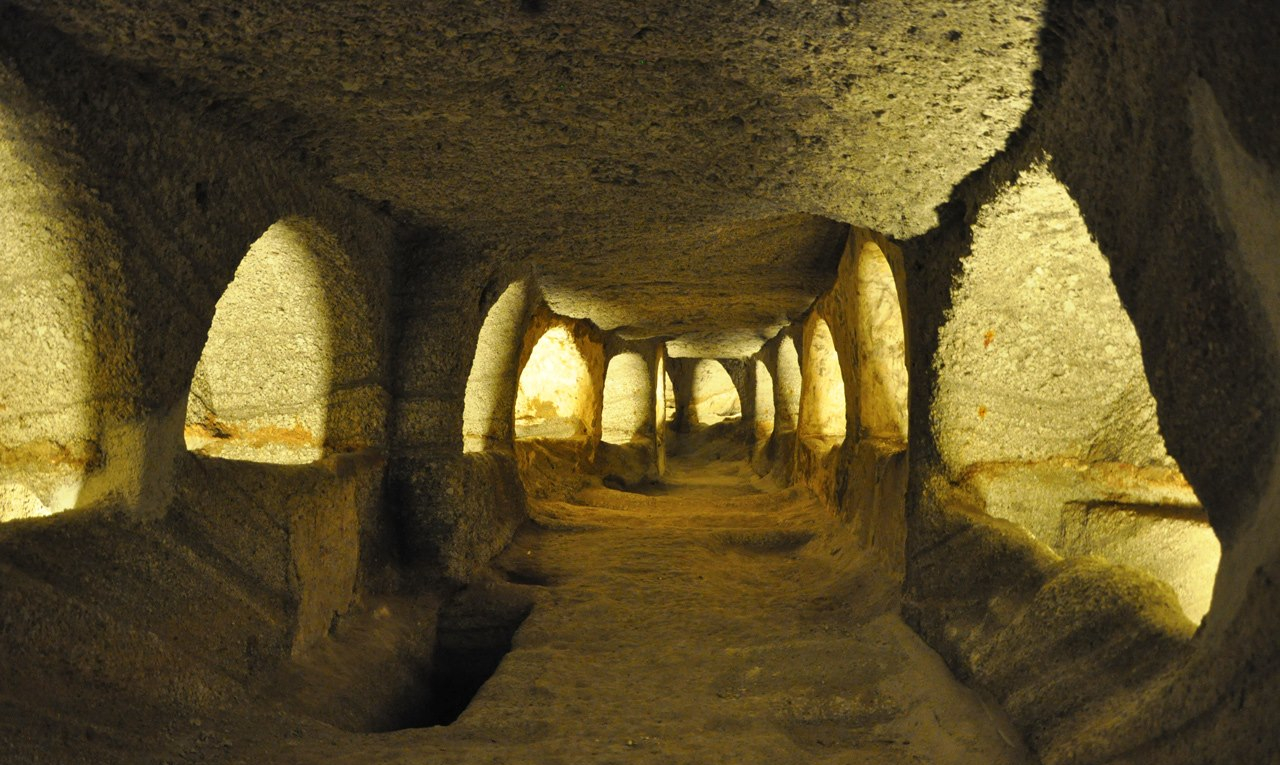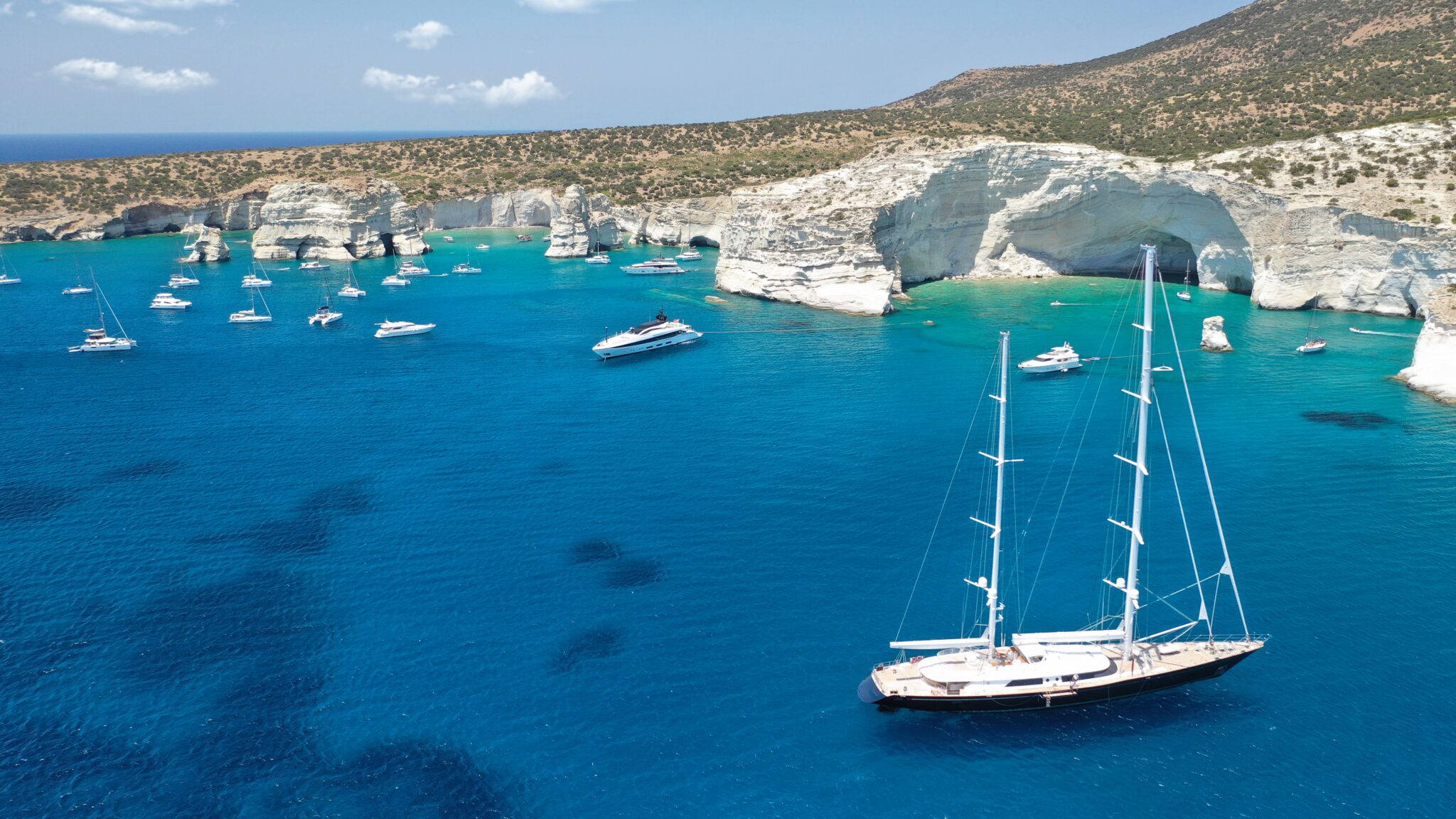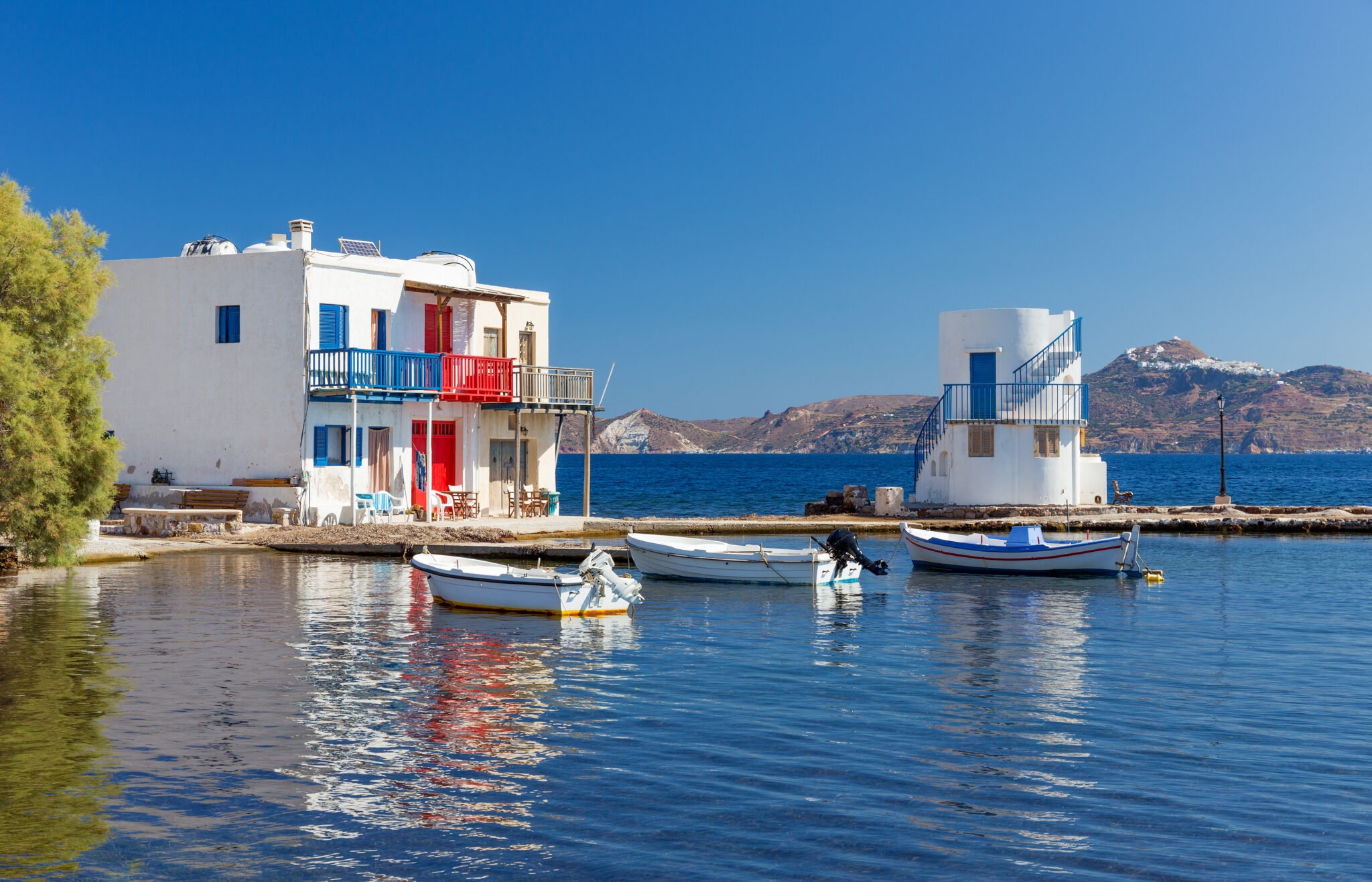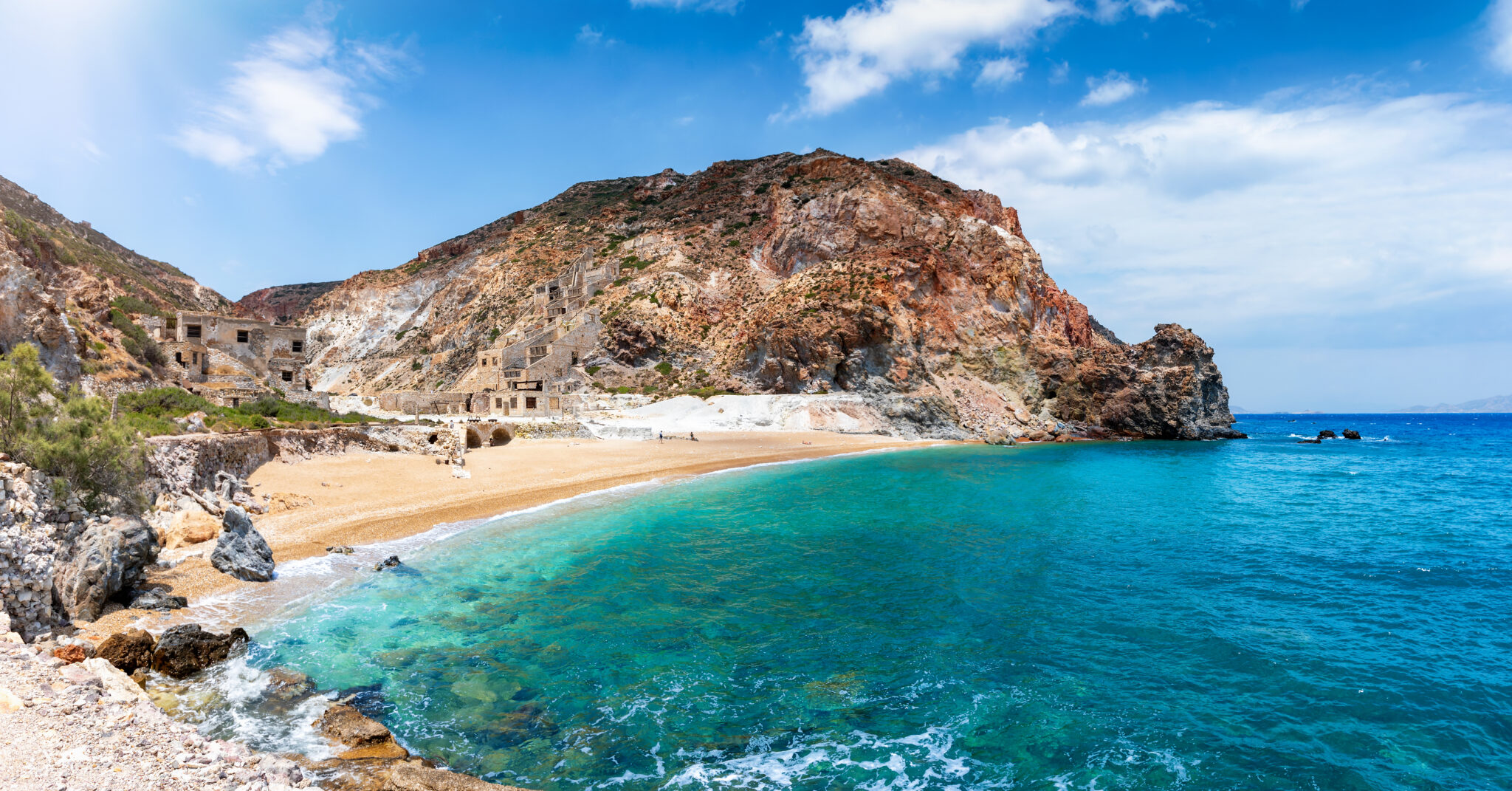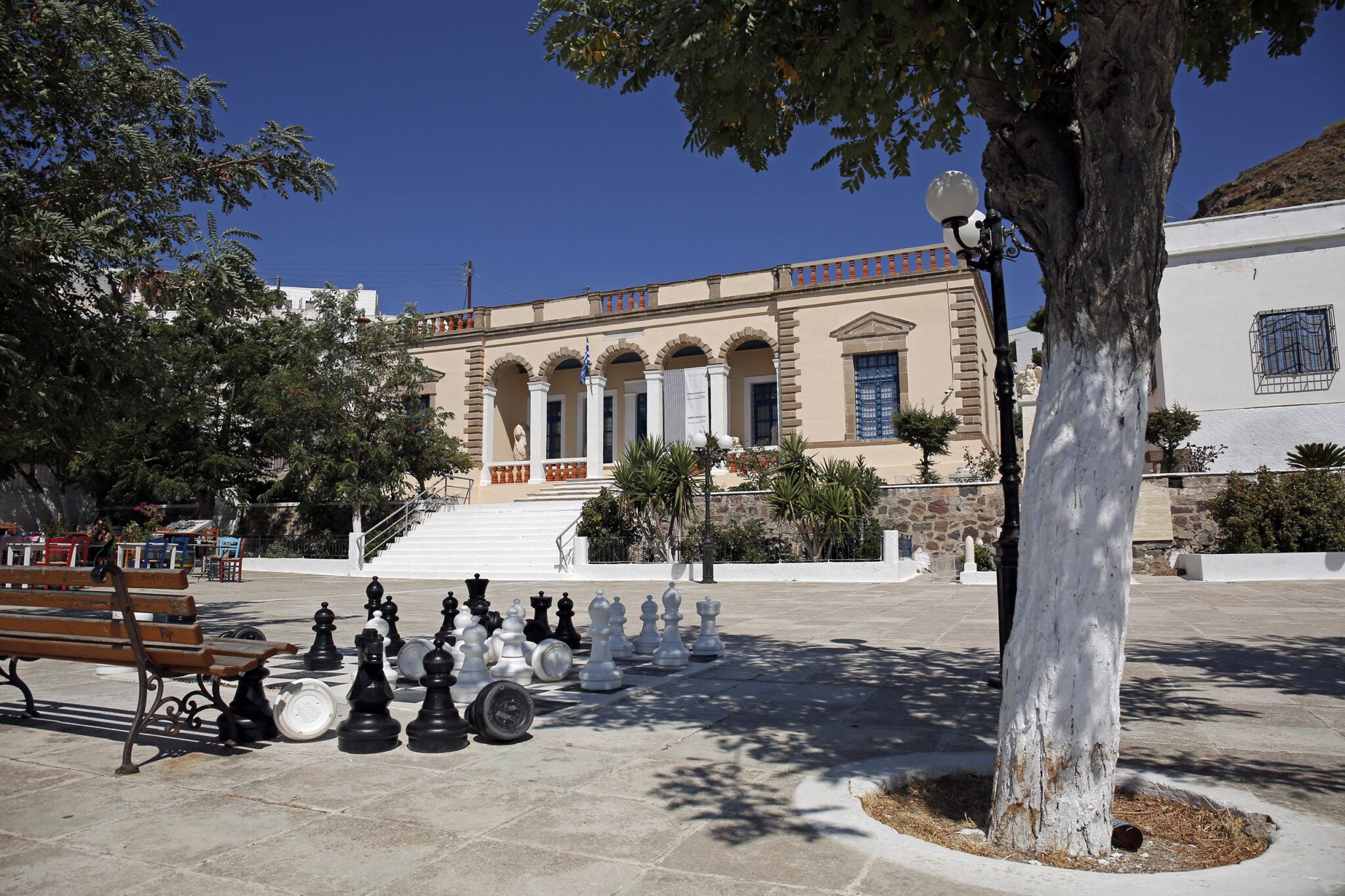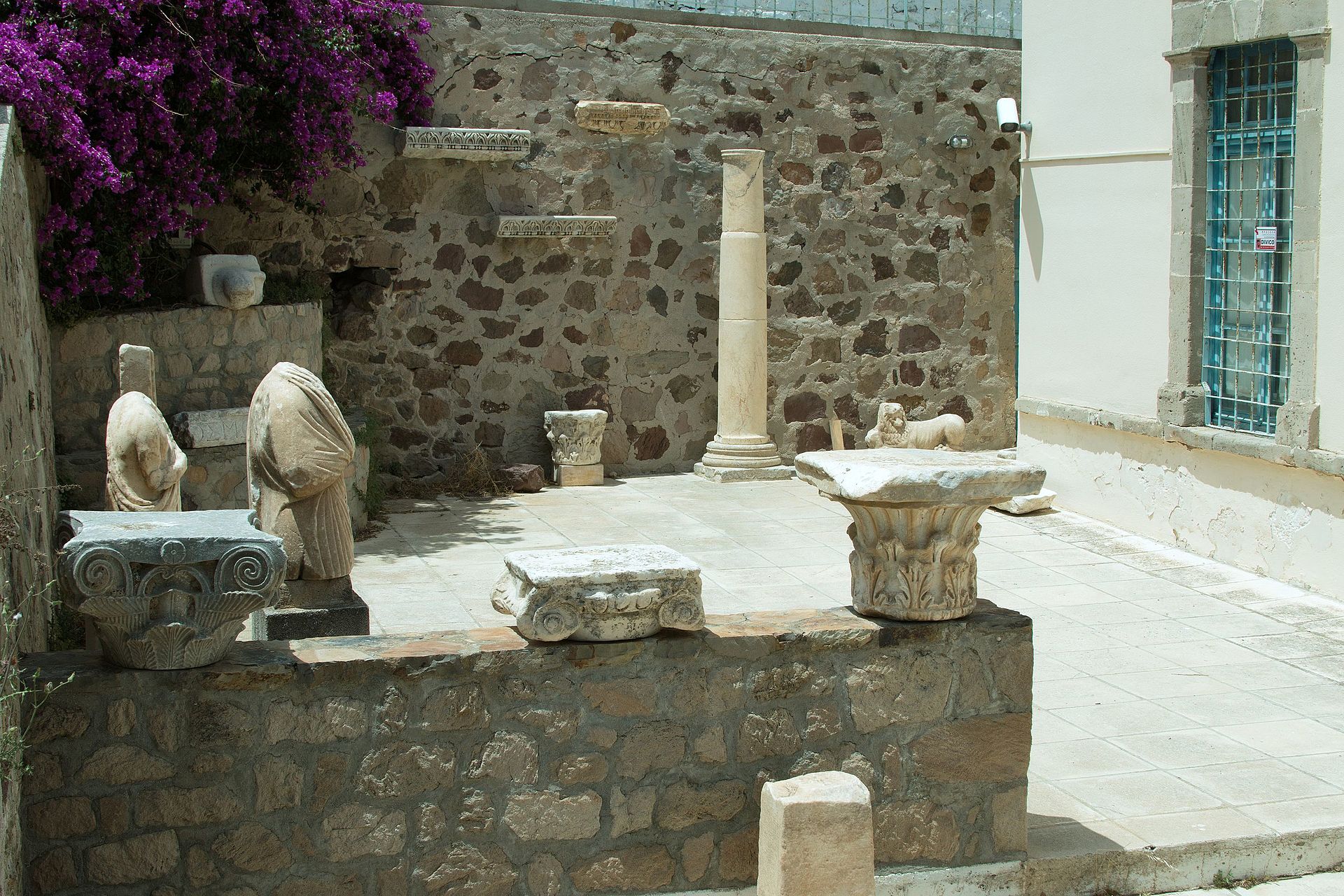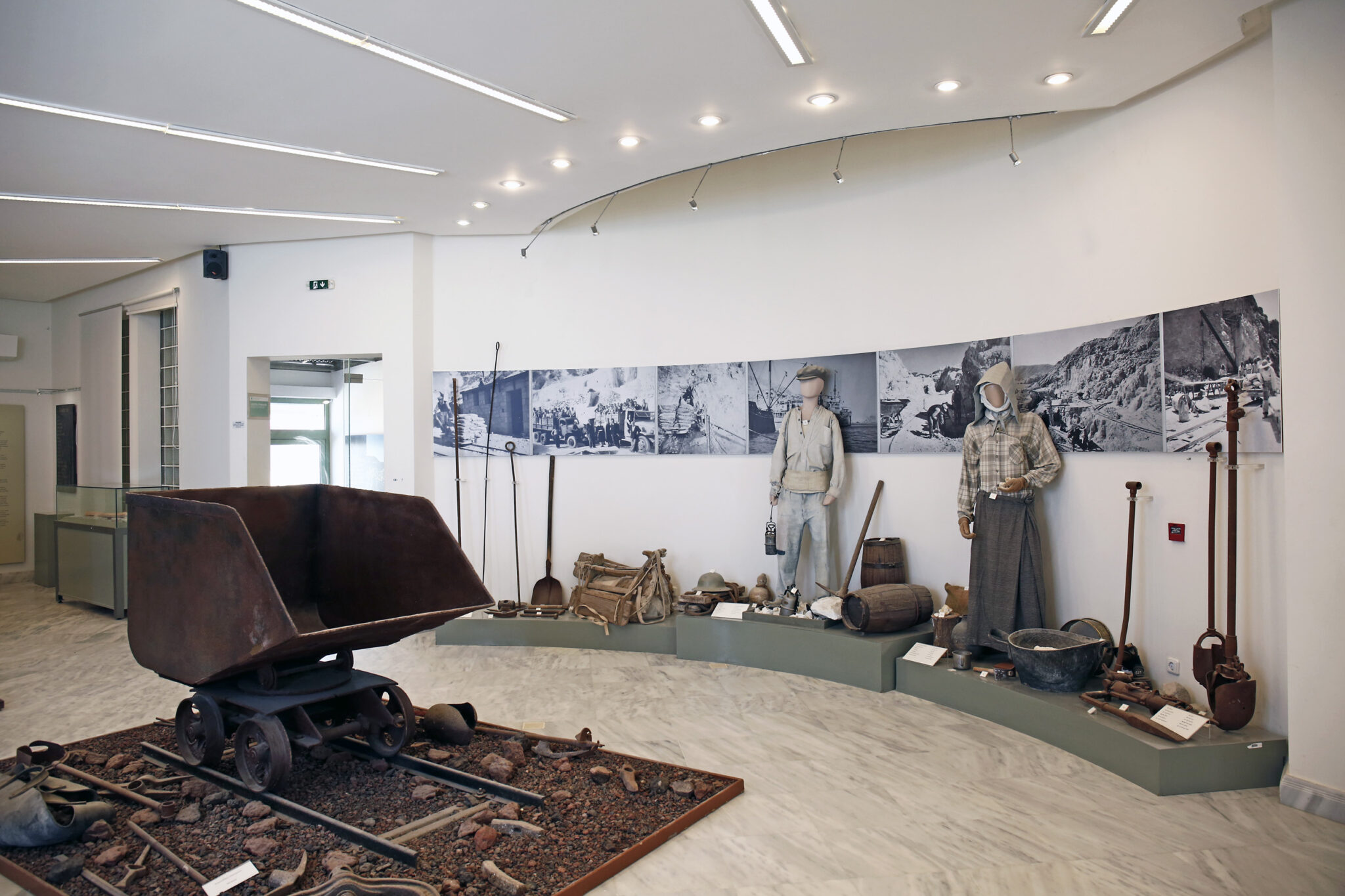Away from the beaches and chora and its port, the volcanic island holds many secrets.
Embourios
A tiny hamlet across the bay from Adamas, it is little more than a handful of houses, a flour mill, and a small harbour. There is a fantastic waterside taverna that seems unchanged from fifty years ago, goats roam freely and behind is the lagoon of Rivari, a haven for birdlife
Phylakopi
Not that impressive to the untutored eye, the site at Phylakopi is now little more than the remains of a few walls. However, there are graves from the early Cycladic era and it served as the capital from 2,300 BC to 1,100 BC, home to one of the most important ports in the Aegean from where the famous Milos Obsidian was sent around the world. (Tel.: 22870 21620)
Thiorichia
Meaning Sulphur Mines in Greek, the abandoned site of Thiorichia at Paliorema beach is a fascinating glimpse into the history of the island. At its peak 220 men worked here, exporting Sulphur all over the world. Left derelict in 1958, the mine buildings still stand as a ghostly open air museum with rail tracks, dormitories, bridges and tunnels forming an eerie backdrop to the sandy beach.
Zefyria
The medieval capital of Milos is now a farming hamlet near to the airport. It flourished during the 17th and 18th centuries as merchants who traded the pirates loot settled there. After an earthquake in 1767, harmful gases were released that gave health problems and the settlement was abandoned for Plaka. Panagia Portiani, an impressively domed church is the main attraction today, while on August 15th the feast day of the Virgin Mary is celebrated with a festival in the village.
CULTURE
Not blessed with archaeological sites despite its long history, the island is still home to some noteworthy cultural centres.
Archaeological Museum of Milos
An elegant neoclassical building in Plaka houses one of the better island collections. There are pots, many painted with sea lilies, burial jars, obsidian knives, Cycladic statuettes, and a clay figurine known as the Lady of Phylakopi, but most visitors come to see the copy of the Venus de Milo displayed here. (Tel.: 22870 21620)
Milos Festival
Running from July until September and organised by the municipality, it holds a series of events including concerts, art exhibitions, dance events, and film and theatre shows. (www.milosfestival.gr)
Milos Mining Museum
On the seafront in Adamas, this museum shows how Milos’ history, landscape and wealth derived from mining. Old mining equipment and tools are displayed alongside mineral samples, and a series of moving films from old miners detail the human aspect of the story. (Tel.: 22870 22481)



